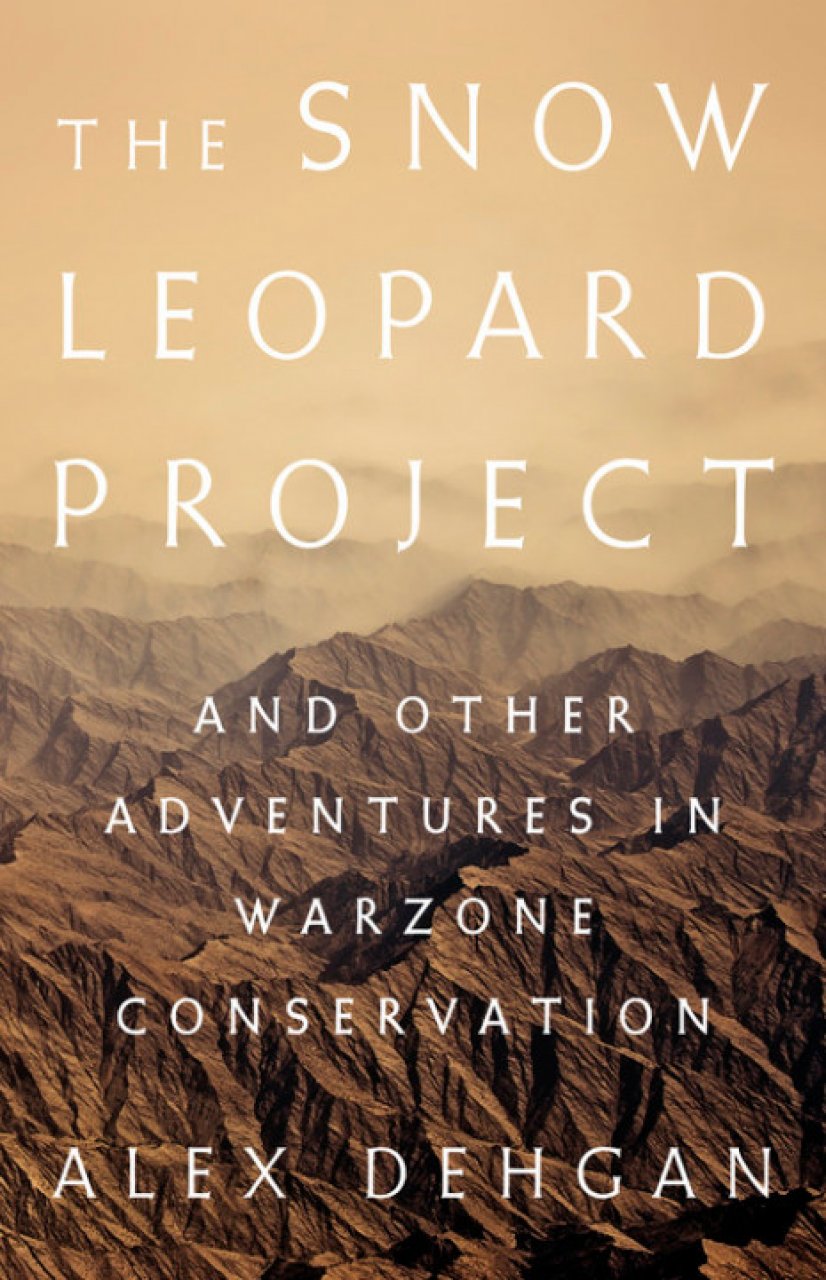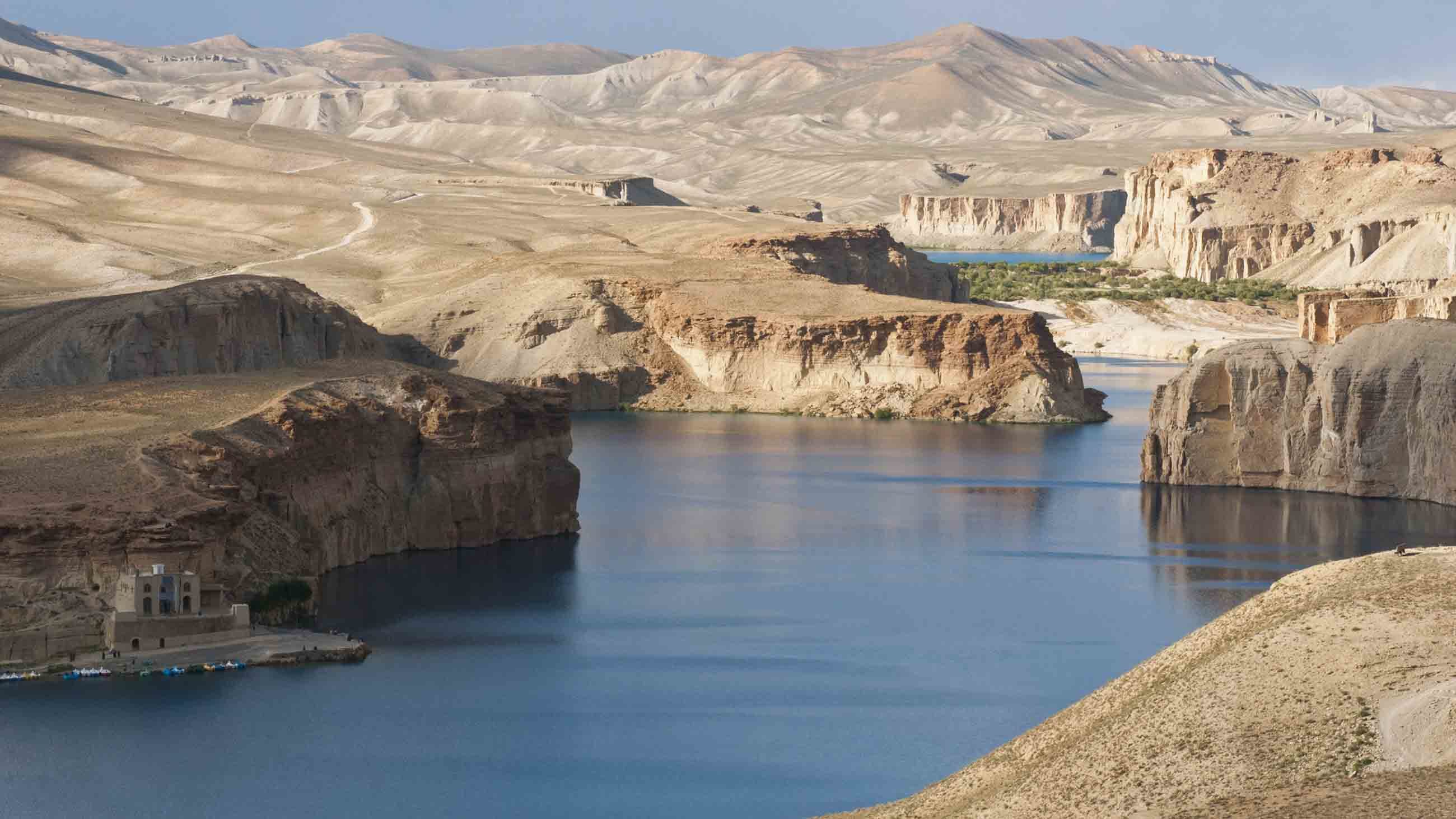The Scientist as Diplomat: Five Questions for Alex Dehgan
Within the first few pages of “The Snow Leopard Project: And Other Adventures in Warzone Conservation,” Alex Dehgan goes bird-watching with a likely Taliban member, camps out in Saddam Hussein’s former throne room, and nearly dies of cerebral malaria.

Afghanistan “has spectacular culture, spectacular geography — it is one of the most beautiful places on earth and you never see that reflected in the media.”
Dehgan, who is both a biologist and an expert in international law, considers himself a “conservation diplomat.” He began his career in Russia, helping to develop environmental laws shortly after the Soviet Union’s dissolution. While earning his doctorate, he lived among lemurs in remote Madagascar rainforests before moving to Iraq to assist in the revamping of the nation’s science culture.
Dehgan’s trail of often perilous assignments eventually led him in 2006 to Afghanistan, the centerpiece of “The Snow Leopard Project,” where he helped to open the Wildlife Conservation Society’s Afghan program.
Along with his team, Dehgan completed the first comprehensive surveys of Afghan wildlife in 30 years, including a search for the threatened snow leopard, and began to develop the country’s first national park, Band-e-Amir.
For this installment of the Undark Five, I spoke with Dehgan about the unique demands of his work, his vision for scientific diplomacy, and the surprising ease of supporting conservation in Afghanistan. Our telephone conversation has been edited and condensed for space and clarity.
Undark: The book illustrates how the environment can sustain communities and can be integral to a place’s culture and heritage. Why is Afghanistan such a vivid example of these connections?
Alex Dehgan: People don’t think of Afghanistan as a place that sustains life. They don’t recognize that as much as it is a cultural Silk Road with a deep history, it’s also a biological Silk Road. It is unbelievably rich in biodiversity. You have more cat species there than, at one point, in all of Africa. You have everything from hyenas to black bears to brown bears in this single country, and much of that wildlife is deeply embedded in the people’s identity.
One of the things that was really astonishing was the warmth and the overwhelming enthusiasm we had for doing conservation in the country. We realized it was so closely tied to how people saw themselves. For people who [have been refugees and] had to live in societies in the Emirates, in Pakistan, in the West, in Iran — which subsumed their own identity — they are now making this connection back to the wildlife.
UD: You write, “Science could become a way to reset American relations with the Middle East,” and also repeatedly use the phrase “conservation diplomacy.” Do you think this is a role that’s becoming more important for scientists?
AD: Scientists can connect across disparities. Disparities of religion, culture, geography, time zones and everything else — language — can be overcome because of this sheer love of science.
Speaking about science in general, the threats that these countries are facing, that our country and other countries face, from emerging pathogens to climate change to how we manage synthetic biology are ones that our traditional diplomatic core — which was trained in history and traditional social science and political science and economics — is not necessarily prepared for.
One of the things we hope to see is this diversification of who is a diplomat. Increasingly, the diplomacy that happens through non-official channels is just as important as that which happens between countries.
UD: You often face challenges of both conservation and conflict, from navigating minefields to wildlife trafficking. How did you handle your work under these different and sometimes conflicting pressures?
AD: I studied tropical biology in Costa Rica and Panama. I worked in conservation, actually, in Russia after the fall of the Soviet Union. I’ve worked in conservation within the United States. Afghanistan was by far the easiest place, in some ways, which sounds paradoxical, because of the Afghans’ enthusiasm for what I was doing. And that is because, I think, they recognized that their own livelihoods are dependent on natural resources.
Afghanistan, at one point, was the third most heavily mined country in the world, which posed a series of challenges to how we were working. We would send people out for weeks on the back of a yak or into very remote environments. They had to be highly independent while they were doing these surveys and to go into environments and communities — such as on the border regions with Pakistan — where there were substantial threats whether you were an Afghan or an American.
And there are some things you just don’t think about. We used this thin white thread to mark the lengths of transects that we would walk while we were looking for scat, signs of wildlife, to determine what species were present in Afghanistan after 30 years of conflict. Some of the locals interpreted that [white thread] as a way of signaling to U.S. forces that this was an area they should bomb. Understanding how things could go seriously wrong, how they could be misperceived, how you communicate, and how you work within the society, was critical.
UD: Building education and awareness, even among humanitarian groups, became a priority for you in combating the illegal wildlife trade. Can you talk about the role of behavior change like this in the conservation field?
AD: In the case of the snow leopards, one part was this thriving illegal trade that was happening on U.S. military bases, and also the markets for the humanitarians who were buying things like snow leopard comforters and pelts of endangered and vulnerable species. They may not have realized that they were not only violating U.S. law, potentially Afghan law and international trade laws, but they were undermining the country that they had come to help.
Once we actually started talking to people, talking to the military, writing articles for the humanitarian community, and then talking to the Afghan government, we saw unbelievable support. We trained the people in the airport, as in: “These are the species that are unique to Afghanistan. These are the ones that are threatened. This is how you identify them.” And every time I would go through the airport, I would almost miss my flight because they would take me aside and show me all the furs they had seized.
The most surprising thing was when the traders themselves, who were being shut down, said, “Could you please actually sit with us and train us in how to identify which species we need to protect and which species we are allowed to sell?”
UD: You conclude the book optimistically, writing that your experience in Afghanistan gave you hope. How have you held onto that hope?
AD: The number of snow leopards we found in the country is actually greater than what we thought. The musk deer, which was thought to be gone, was found. There are a bunch of other successes of new species reports in this area.
The Wildlife Conservation Society continues to operate in the Wakhan Corridor, and Afghans themselves are coming as tourists to these parks. That, to me, suggests that there is value behind what we’ve built, that there is success.
Back in 1979, tourism was the number two source of revenue in the country [after agriculture], and there was a reason for it. It has spectacular culture, spectacular geography — it is one of the most beautiful places on earth and you never see that reflected in the media. There are places you can visit, and by doing so, you are able to bring the country opportunity and to protect the wildlife. I hope people do that, and I hope they see a different view of the country through this book.
Tiffany Gibert is a freelance writer and editor living in Washington, D.C.











Comments are automatically closed one year after article publication. Archived comments are below.
I admire your work immensely, and I would like to ask – What genera/species of plants did you record during your work in Afghanistan ? Can you connect me to any Flora documents for Afghanistan or any other (recent if possible) botanical references for Afghanistan ?
Why ? I am a life-long student of the flora of the mountains of Eurasia, and i need to learn more about the flora of Afghanistan. As a professional geologist, I am also fascinated in the connections between subsurface rocks, soils and plants. In particular, I am interested to introduce new species of both bulbs, corms and other plants to collectors in Western Europe and USA,
Thanks a lot
TOM
Please do NOT introduce “new species of both bulbs, corms, and other plants to collectors in Western Europe and the USA.” We have too many introduced invasive plants now. Invasive plants are destroying wildlife habitat, driving native plants into extinction, damaging streams and diminishing water supplies for wildlife and human use. Efforts to control these invasive plants (and animals) costs billions of dollars a year. You describe yourself “as a professional geologist” perhaps you should extend your education to ecology.